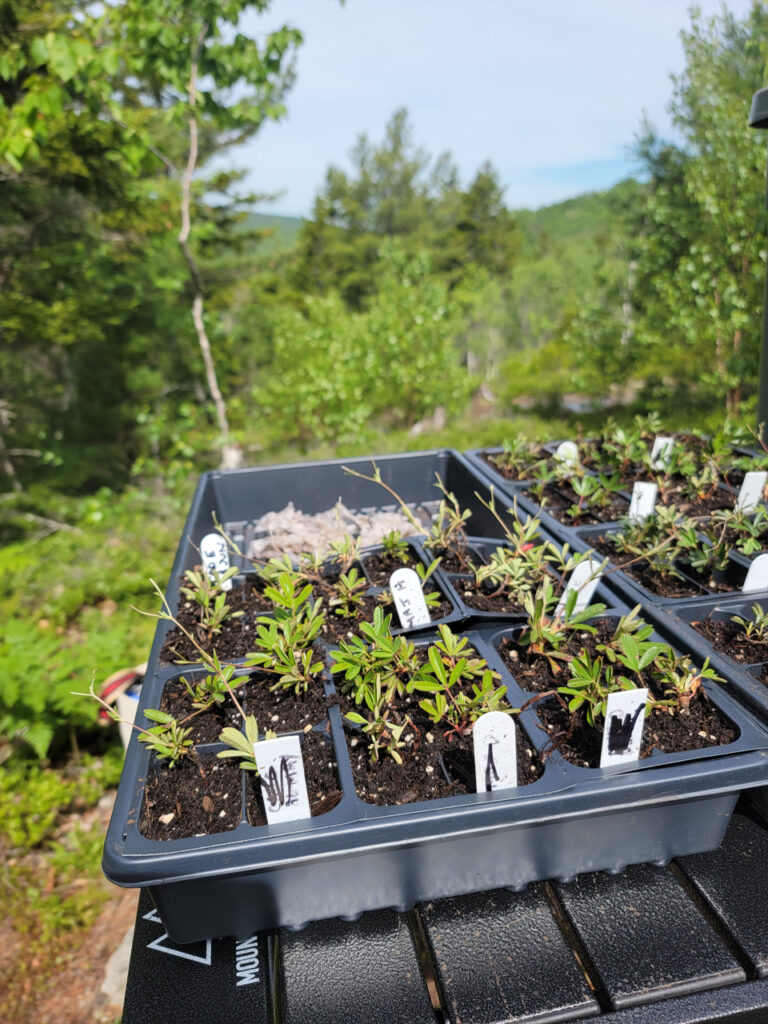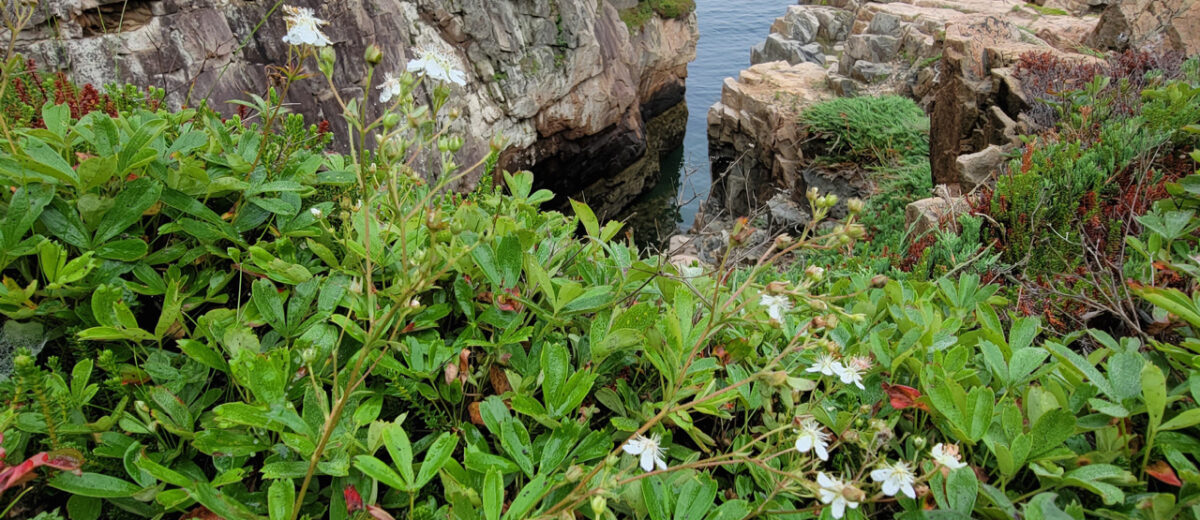by Olivia Milloway; photos by Catherine Schmitt
If you’ve spent time on the Schoodic Peninsula, you’ve likely seen members of the rose family (Rosaceae) along roadsides and open, rocky areas. Contributors to the Schoodic Signals iNaturalist project have documented 48 species in the Rosaceae family on including wild strawberry (Fragaria virginiana), black chokeberry (Aronia melanocarpa), common blackberry (Rubus allegheniensis), white meadowsweet (Spirea alba), and three-toothed cinquefoil (Sibbaldiopsis tridentata). Each of these species has small, white, five-petaled flowers, sometimes set in clusters and other times blooming alone.
Three-toothed cinquefoil is of particular interest to scientists here at Schoodic Institute. Second Century Stewardship Fellow Jenny Smetzer modeled future habitat or “climate refugia” of certain cold-adapted, sensitive species, including three-toothed cinquefoil. Chris Nadeau, also a Second Century Stewardship Fellow and now a postdoctoral researcher at Northeastern University, is studying three-toothed cinquefoil as a part of the Sustainable Summits Project. Using three-toothed cinquefoil as a model species, Nadeau is investigating how to restore mountaintop vegetation in New England in a manner that will also be resilient to climate change.

Nadeau gathered three-toothed cinquefoil from more than thirty summits across Northeastern mountaintops and planted them in two experimental gardens on the slopes of Cadillac Mountain and one on the Schoodic Institute’s campus. Over the course of a couple of summers, Nadeau is measuring how these plants from around the region grow in different environmental conditions so he can determine if any of these populations are better suited to withstand climate change.
While it might make sense that populations from the southern areas fare better in warming climates, this theory has yet to be tested widely, which is one reason Nadeau chose to study three-toothed cinquefoil. For one, the plant has a wide range, with populations spanning across the cold peaks of Canada to the much warmer mountains in northern Georgia. In addition, three-toothed cinquefoil grows through stolons, or stems that run along the surface of the ground, making it a hardy plant that Nadeau could dig up, hike down a mountain, and plant in a greenhouse in Boston. Out of nearly 2,000 individuals, 83 percent survived the transplanting.
There are currently 306 observations of three-toothed cinquefoil documented on the Schoodic Signals iNaturalist project, making it the second-most observed species on the peninsula, behind only black crowberry, another Schoodic Signals species. If you see three-toothed cinquefoil in your neighborhood on the Schoodic Peninsula, add your observations to iNaturalist.
